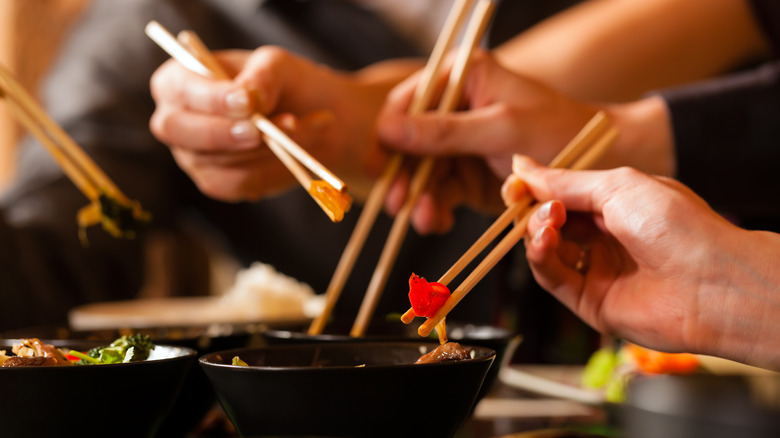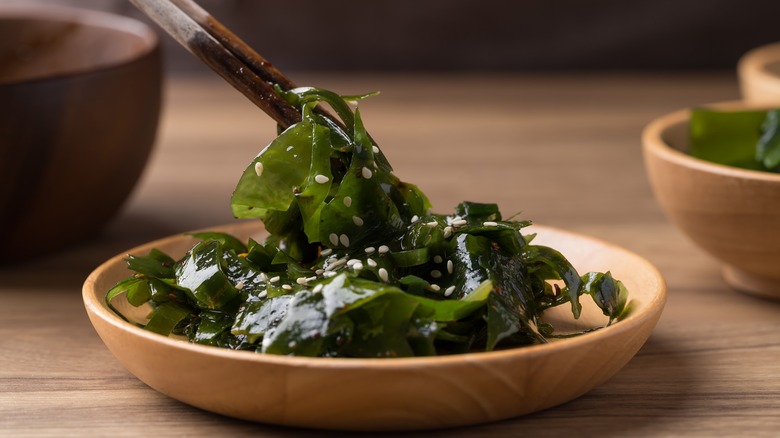Chinese, Japanese, And Korean Chopsticks Are Not The Same. Here's Why
From spiralizing hot dogs to making the perfect hasselback potatoes, chopsticks a number of different uses that many people might find surprising. Of course, their primary purpose has always been as an eating utensil. However, if you haven't already noticed, the way various chopsticks look often varies from pair to pair. That's because the design of these tools is heavily determined by the culture they come from, whether Chinese, Japanese, or Korean.
As common as forks and spoons are, countless households and restaurants rely on chopsticks to bring food to hungry mouths each day. The shape, length, and material of one pair might be very different from another, and these factors are all more thought out and intentional than many people usually realize. It comes down to the distinct traditions and practices each culture observes. So, next time you pick up some chopsticks, take note of its characteristics if you want to know what it's meant for and where it's from.
Chopstick styles are influenced by the culture's customs
Mastering the art of eating with chopsticks effortlessly can be challenging, but spotting the seemingly insignificant differences in these utensils isn't — provided you know what to look for. Chopsticks in Chinese cuisine, for example, are usually the longest type. It's common for people within Chinese culture to share food with one another, and the extra length on their chopsticks makes it easier to reach between dishes. They're typically wider and have a blunt end as well to better pick up larger pieces of food.
Japanese chopsticks, on the other hand, are the shortest of the three. They're thinner and usually made of wood or plastic. Their ends are fine and pointed, making it easier to eat meals with precision. Picture fish, for instance, a food that requires descaling and deboning. Perhaps most notable about Japanese chopsticks is their variety of colors, though. Particular colors are sometimes used for certain events. An example would be how black or red-colored chopsticks are pulled out for funerals.
In contrast to the unique aesthetic Japanese chopsticks have, Korean chopsticks are commonly made of stainless steel or silver metal. This is for a number of reasons, one being that the metal can be easily boiled for sanitary purposes. Another is that royals once believed the silver in the utensils would change colors in reaction to attempted arsenic poisoning. They're also flatter in shape not only to reduce the amount of material needed for production, but also so they're easier to handle.

